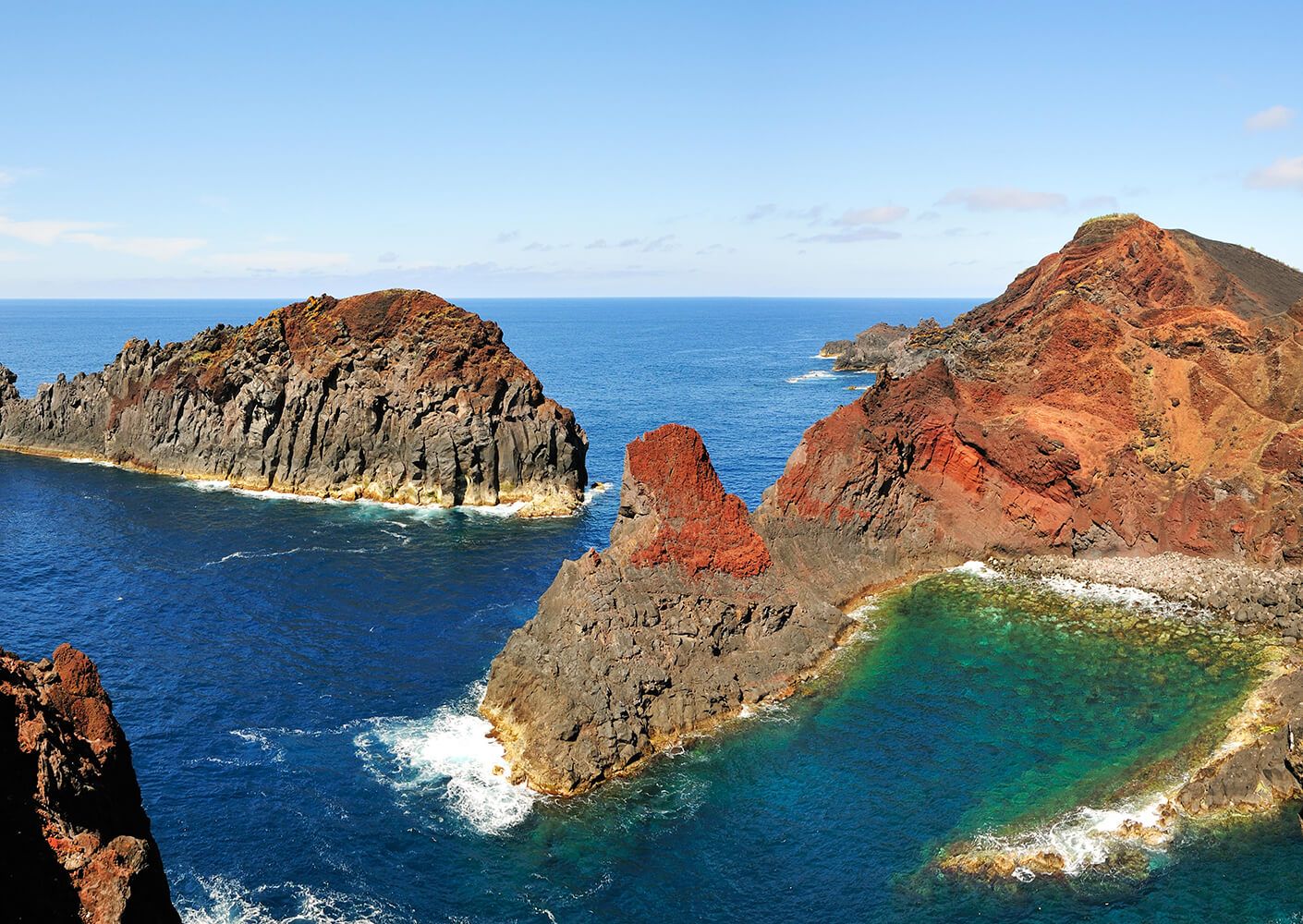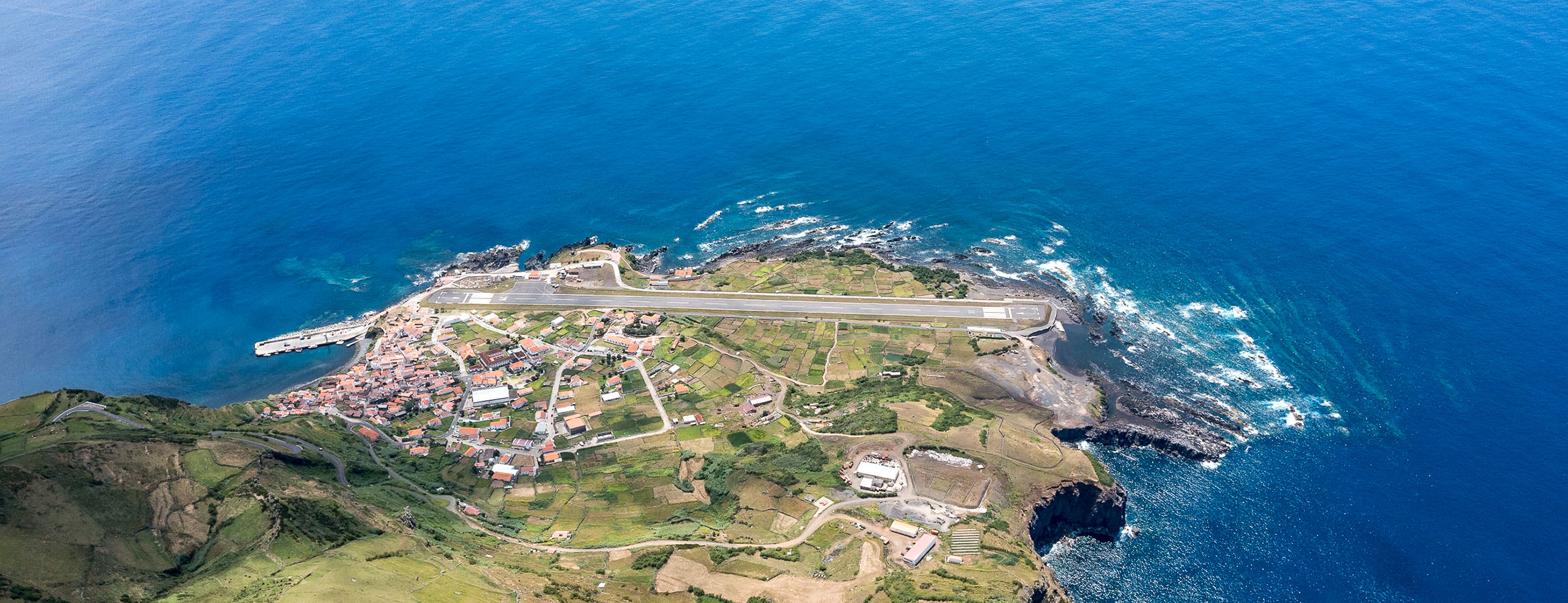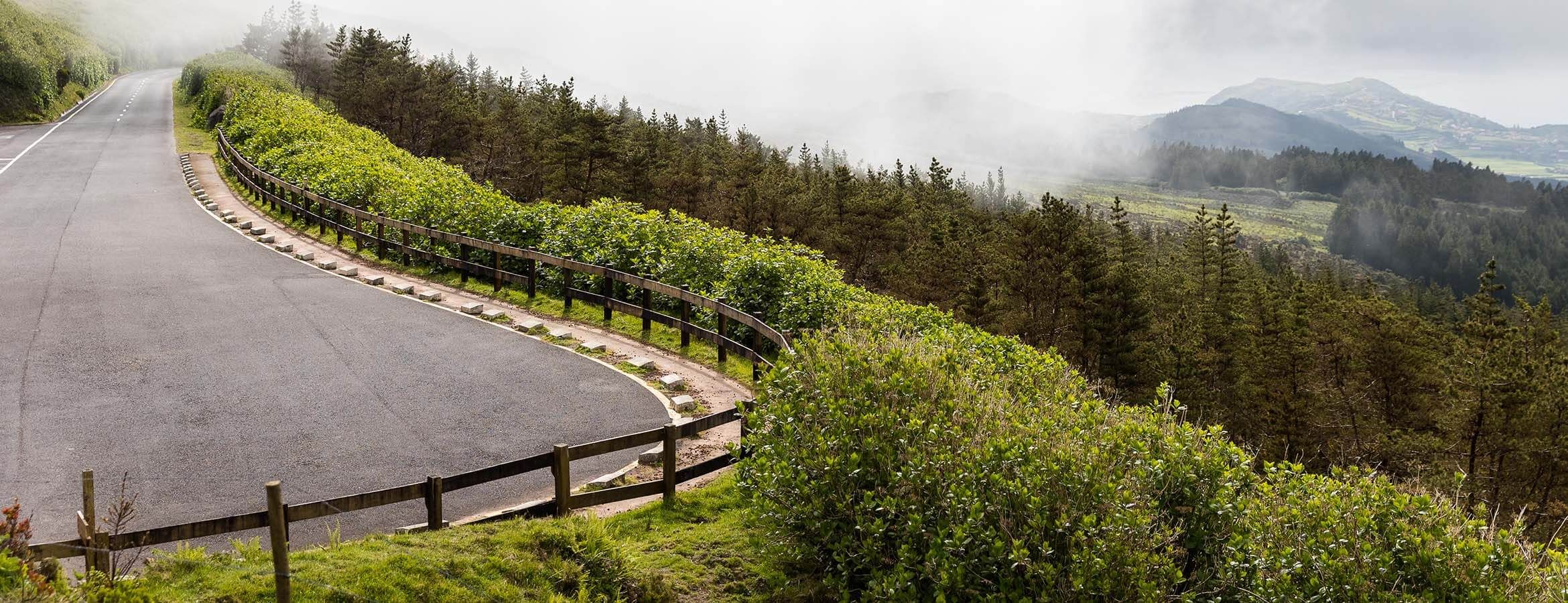

Graciosa
The size of Graciosa, with 12.5 km in length and 7 km at its maximum width, provides the island with an elongated shape from the Northwest to Southeast.
The size of Graciosa, with 12.5 km in length and 7 km at its maximum width, provides the island with an elongated shape from the Northwest to Southeast. There are 4,391 habitants (2011 data) living on the island’s surface of 60.66 sq. It is the northernmost island from the five that make up the Central Group of the Azores Archipelago, with São Jorge, 37 km away, being the closest island. At an altitude of 405 metres, this island’s highest point is located in Caldeira at 39°01’17’’ latitude north and 27°57’59’’ longitude west.
The year of the Portuguese discovery of this island is uncertain. It is believed that it was spotted some time between 1449 and 1451, after the discovery of the island of Terceira, in a similar fashion to the other islands that make up the central group. The official and continud settlement of the island started in approximately 1470. At that time, or even before that, Vasco Gil Sodré was one of the first settlers of Carapacho, which was the very first place to be populated. However, to this day, it is still uncertain the role that he played on the administration of the island. In those days, the Donatory Captains, for a part or the totality of the island, were Duarte Barreto do Couto and Pedro Correia da Cunha. The development of the island received a new impetus with the arrival of new settlers from Mainland Portugal and from Flanders. From the south to the north, the fertile soil planes of the interior were consecutively occupied. New settlements were built, such as that of Santa Cruz, which rapidly received a town charter from the king in 1486. In 1546, the locality of Praia, also known as São Mateus, was also upgraded to town. The local economy was based on agriculture. Wheat and barley, the last one almost exceptional within the archipelago, were the main productions of the 16th century. Besides the harvest of orchil, wine production was also very important, and the locally produced wines and spirits were appreciated and consumed inside and outside the island. Trade was limited to the island of Terceira, which was then the central harbour of the Archipelago. And, just as its neighbouring island, the island of Graciosa was also attacked and pillaged by pirates during the 16th and 17th centuries.
Graciosa has suffered from drought and natural disasters throughout its history, which have caused a generalised impoverishment. As it happened on other islands, during the 19th century, the number of vineyards was remarkably reduced given the spread of oidium and phylloxera, grapevine pests that affected most production. Between the 1950s and 70s, the large number of emigrants that left the island for the United States substantially reduced the island’s social and economic activities. The farmers joined forces to create a cooperative in order to partly recover the local wine tradition, with the Demarcated Region of Graciosa being established in 1994. Currently, the most important activities for the economy of the island are the dairy and meat productions. The minutely divided fields also give shelter to corn, vegetables and fruit trees.
During the 1980s, the construction of the airport and of the harbour of Praia opened new business opportunities, thus placing Graciosa on route to a sustainable tourism.
Classified by UNESCO as a Biosphere Reserve, the island of Graciosa is the second smallest of the archipelago and is also the one with the least imposing terrain, with several flat areas and smooth hills. Pedras Brancas (White Stones), Serra Branca (White Hills) or Barro Branco (White Clay) are localities on the island whose name is related to the presence of a volcanic rock, the trachyte, which is common on the island and which, once rotten by the passing of time, gets a whitish colour which justifies the nickname of White Island.
The Caldeira da Graciosa (Caldera of Graciosa) is the most iconic landscape feature of the island and corresponds to the elliptical depression that resulted from the collapse, with the diameter ranging from 1.6 to 0.8 km and the depth reaching 270 m. This depression is located at top of the volcano, the smallest central volcanic structure of the Azores. Climbing to the Furna da Maria Encantada (Maria Encantada Cave) or entering the caldera through a tunnel that provides access to it allow us to have an overview of the whole depression and of the abundant and thriving vegetation planted by man. cryptomeria, acacia, pine trees, and incense cover virtually all the walls of the caldera and contrast with the vegetation of other areas of the island.
The Furna do Enxofre, an imposing volcanic cave, is located inside the Caldera. Communicating with the outside through two large cracks, the Furna do Enxofre (Sulphur Cave) features a perfect dome inside with a height of approximately 40 m in its central part. One reaches the interior through a tower built in the early 20th century, featuring a spiral staircase with 183 steps. The "cathedral" of the volcanic caves of the Azores showcases a lake of cold water and a mud fumarole responsible for the smell of sulphur, after which the cave is named and which is a reminder of its volcanic origin.
In turn, the Caldeirinha de Pêro Botelho is the only volcanic pit on the island, about 37 m deep. First explored in 1964 by the Association "Os Montanheiros", this deep hole allows us to recreate a journey of Jules Verne to the Earth's interior, but it is only recommended for experienced explorers provided they have all the necessary equipment.
The Pico Timão (Timão Peak) is one of the largest scoria cones on the island of Graciosa, and along with the Ponta Lagoa – Arrochela (Lagoa – Arrochela Headland), it resulted from the last volcanic eruption that took place on Graciosa approximately 2,000 years ago.
The rocky coastline is generous in the number of special views it provides. The high and steep cliffs of the Serra Branca and the Ponta da Restinga contrast with the low altitude of the coast in the bays of Vitória, Folga, Barra and Porto Afonso, and deserve special attention. The Praia Islet, in front of the island’s only sandy beach, stands out from the blue sea given the green vegetation that covers its surface and has been classified as a Special Protection Area, as it lies along the route of the Monteiro's Storm Petrel, the only seabird endemic to the Azores.
The Ponta da Barca Lighthouse showcases the highest tower among all the existing lighthouses in the Azores and affords a breathtaking view of the blue Atlantic Ocean and of a small rocky islet carved by the force of the sea. The brightness of the sunset enhances the surreal nature of the Ilhéu da Baleia (Whale Islet), a true symbol of the island of Graciosa and of the entire archipelago turned into a whale sanctuary.
Nature and the man-made elements that make up the landscape of Graciosa seem to seek a harmonious coexistence. At the Miradouro do Monte at Nossa Senhora da Ajuda, a lookout next to a simple and dignified chapel, one of the to see the white houses of the town of Santa Cruz. Next to them, the windmills and the walls squarely divide the vineyards. Before descending to the town to appreciate all the details, one must stop by one of the greatest associations between the inventive spirit of man and the geological nature of the Azores: a bullfight arena, millimetrically round and built inside a volcanic crater.
Santa Cruz is remarkable for its cobbled roads and typical homes, spreading from the wide central square with a bandstand, water tanks and araucarias. The town’s church was built at the end of the 16th century, but a later restoration left some baroque marks. The architectural heritage is preserved here in various types of structures, especially in churches, chapels, farmhouses, windmills, and in a curious “water architecture” used in a centuries-old network of reservoirs and water supply systems. The localities of Guadalupe, Luz and Vitória should be visited with your senses fully alert. At the town of Praia, laced curtains stand behind glass windows, fishing boats dot the harbour and the local population greets visitors. The windmills that have been restored attract one’s eyes, with bright colours on windows and doors. Inside, they are ready for a temporary stay in a paradigmatic example of tourism that takes advantage of the local legacy.
The traditional threshing activity is still alive and can be seen on the side of roads in the now rare piles of corn. At Limeira, some people still dry the corn on the top of a four legged platform with a triangular shape. After grinded the grains, the flour is baked into corn bread, which is cooked and eaten at home.
The local artisans association, Associação de Artesãos da Ilha Graciosa, opens its doors to reveal the methods employed in embroideries, hand made using flex, a very old activity on this island, employing very old types of stitches.
The Museum of Graciosa, divided into six different sections, stores much of the local ethnography. One can see traditional activities, such as agriculture, wine and wheat production, whaling and old trades, through the equipment, tools and historical documents kept at the Museum. In the central section, there is a typical home of Graciosa, fully furnished and decorated. There are also various collections, namely, coins, post cards, newspapers and photos, amongst others.
The festive season of Graciosa is filled with popular dances, brass band concerts, celebrations of the patron saints of the different parishes and the famous Carnival Balls. Dancing and popular mannerisms are kept alive by the people’s passion for music, which spreads throughout the whole year, under the auspices of the local Music Academy. During the week of Carnival, various groups organise parades with properly dressed dancers, wearing masks and original costumes.
The festivities honouring the Senhor Santo Cristo dos Milagres (Lord Christ of Miracles) take place in August and add other type of events to the religious component. There are musical shows and folk dancing that enliven the historical streets of Santa Cruz. Similarly to the rest of the archipelago, the Holy Ghost Festivals are also traditionally rooted on this island, taking place from May to September.
Fresh fish captured in the generous sea of the Azores is traditionally served roasted or stewed. The garlic and the rockmelon of Graciosa attained a gourmet status and are basic ingredients for various recipes.
However, if there is a typical product of this island, it is the pastry that adopted the namesake of the island: Queijadas da Graciosa (Graciosa Custards) inspired by the centuries-old recipe of milk tumblers. The vast and tasty local pastry also includes other delicacies which go by the name of cavacas, escomilhas, capuchas, pastéis de arroz [rice cakes] or encharcadas de ovos [egg-based custard].
The wine of Graciosa, made from the original verdelho grapes, survived the spread of phylloxera. Now, given that there are other types of grapes, the locally produced white wines complement the regional cuisine. Spirits and aperitif wines also complement the range of local beverages.














